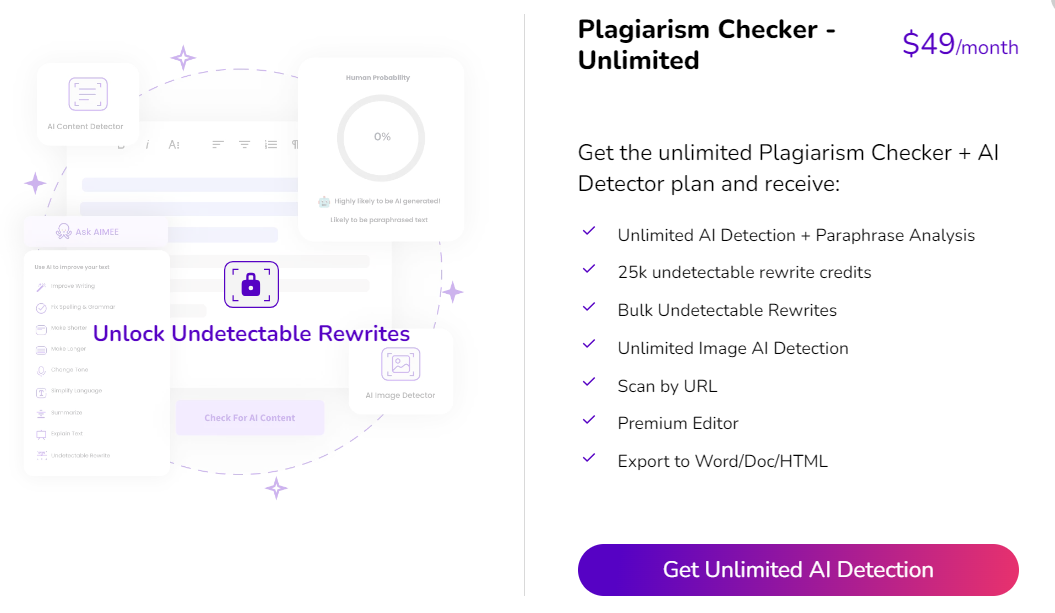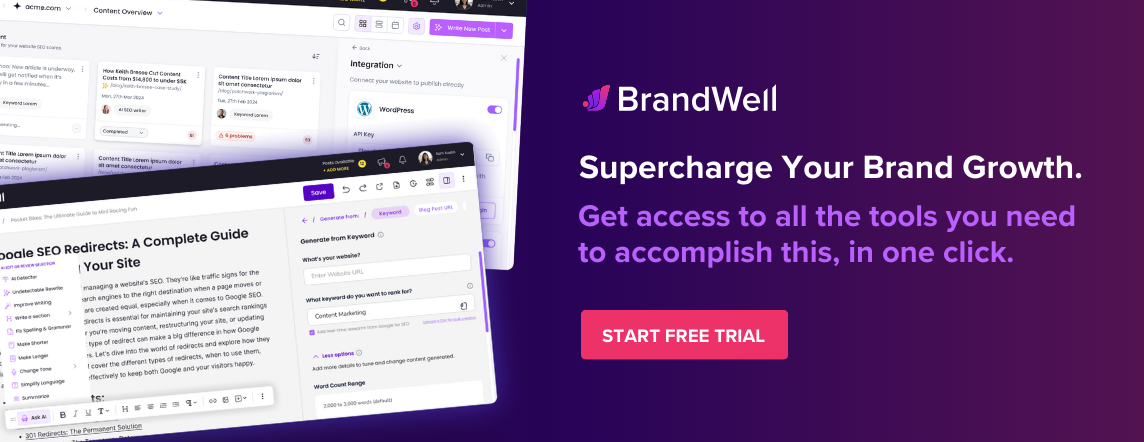Discover top guides, trends, tips and expertise from AIO Writers
Is AI Writing Plagiarism? Ethical & Academic Implications
Julia McCoy
Tuesday, 18th Jun 2024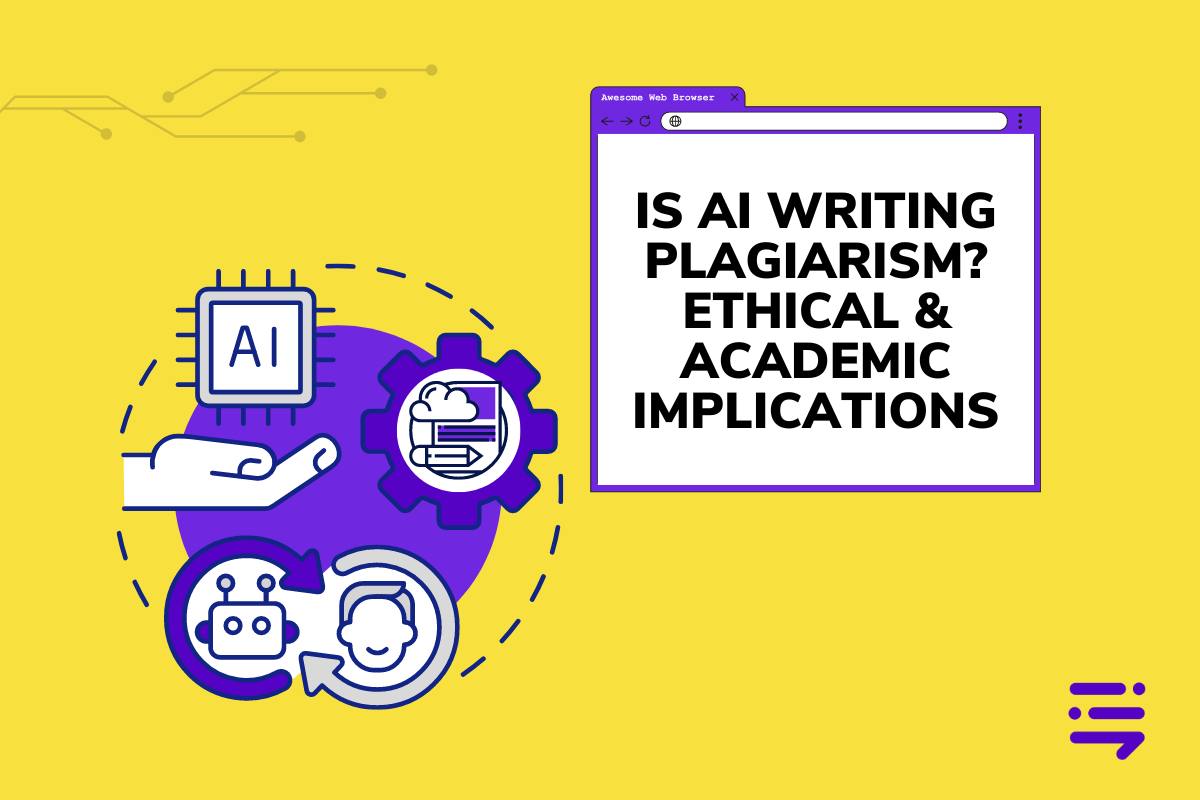
As generative AI writing tools become increasingly powerful and accessible, one big question pops up: is AI writing plagiarism?
After all, these AI programs generate text by drawing on massive amounts of data that already exist.
Students, teachers, and even professional writers are facing an ethical dilemma. With this new technology, knowing how to use AI responsibly is crucial, especially in academic settings where plagiarism can have serious consequences.
As AI writers become more commonplace, let’s try to decipher if AI writing is considered plagiarism.
Table Of Contents:
- Is AI Writing Plagiarism?
- How AI Programs Write Text
- The Associated Press, Minor League Baseball, and AI
- AI Detection Tools: Schools Want to Fight Back
- Authorship and Copyright Infringement
- FAQs: Is AI Writing Plagiarism?
- Conclusion
Is AI Writing Plagiarism?
There is no straight answer to this question as plagiarism in AI content is nuanced and depends on various factors, such as:
1. Originality and Attribution
If AI-generated content is used without proper attribution or is presented as entirely original work by a human, it can be considered plagiarism.
Disclosing AI involvement in content generation is crucial to avoid misrepresentation.
2. Use of Training Data
AI models are trained on vast amounts of data, including copyrighted material.
If the AI reproduces specific text from its training data without modification or attribution, this could be a form of plagiarism.
3. Intent and Context
The intent behind using AI writing tools also matters.
For instance, using AI to generate ideas, outlines, or drafts can be acceptable if the final work is significantly modified and personalized by a human.
However, passing off AI-generated text as entirely one’s own work, especially in academic or professional settings, can be problematic.
4. Ethical and Institutional Guidelines
Different institutions and contexts may have specific guidelines regarding the use of AI tools. Adhering to these guidelines is essential to avoid ethical breaches.
How AI Programs Write Text
To fully understand if AI content constitutes plagiarism, we must first understand how AI generates text.
Generative AI chatbots and writing programs don’t just pull full articles and passages off the internet — at least not in the conventional sense.
However, they are trained on content that was written by human beings, and some students are finding ways to use AI for what some would define as cheating.
So, how does this all work?
To get an AI to write an essay, news story, ad copy, or recipe, a human will first feed the system a series of words called a prompt. The AI tool will then analyze the prompt’s instructions and form an answer or response based on its training data.
But because AI doesn’t directly steal information, things become very nuanced and even confusing when talking about plagiarism.
Take ChatGPT for example. The world’s most popular and widely-used AI chatbot doesn’t lift information and paragraphs directly from websites or pre-existing online articles. Rather, it creates an original text based on sequences and patterns that it found within the millions of documents and text files its vast language model was trained on.
The content ChatGPT generates is surprisingly human-sounding which makes plagiarism questions even more contentious.
The use of ChatGPT for schoolwork has educators up in arms across the country. They often feel this constitutes cheating because students are presenting AI output as their own work — even when the AI technically generates unique and original content every time.
The Associated Press, Minor League Baseball, and AI
Believe it or not, publishers are also using this type of AI technology.
Back in 2016, the Associated Press started using AI to write minor-league baseball game recaps. The program would gather data such as team scores and analyze them to identify highlights and write short game summaries without the need for a full-time sports journalist on-site.
If the Associated Press – a renowned source for factual journalism that reporters at many large publishers across the world often use as a foundation for their news stories – can find ethical applications for artificial intelligence, then it throws a whole other wrench in the whole AI writing plagiarism dilemma.
So is AI writing plagiarism?
AI writing can be considered plagiarism if it involves uncredited use of AI-generated content or if it directly reproduces parts of its training data without appropriate attribution. Responsible use of AI writing tools, including proper citation and substantial human input, can mitigate these concerns.
To ensure that you are not submitting plagiarized work, always run your text through a plagiarism detector.
With a free tool like BrandWell‘s plagiarism checker, you can scan your content for potential overlap with existing sources.
Here’s an article that ChatGPT wrote which turned out to be 88% plagiarized:
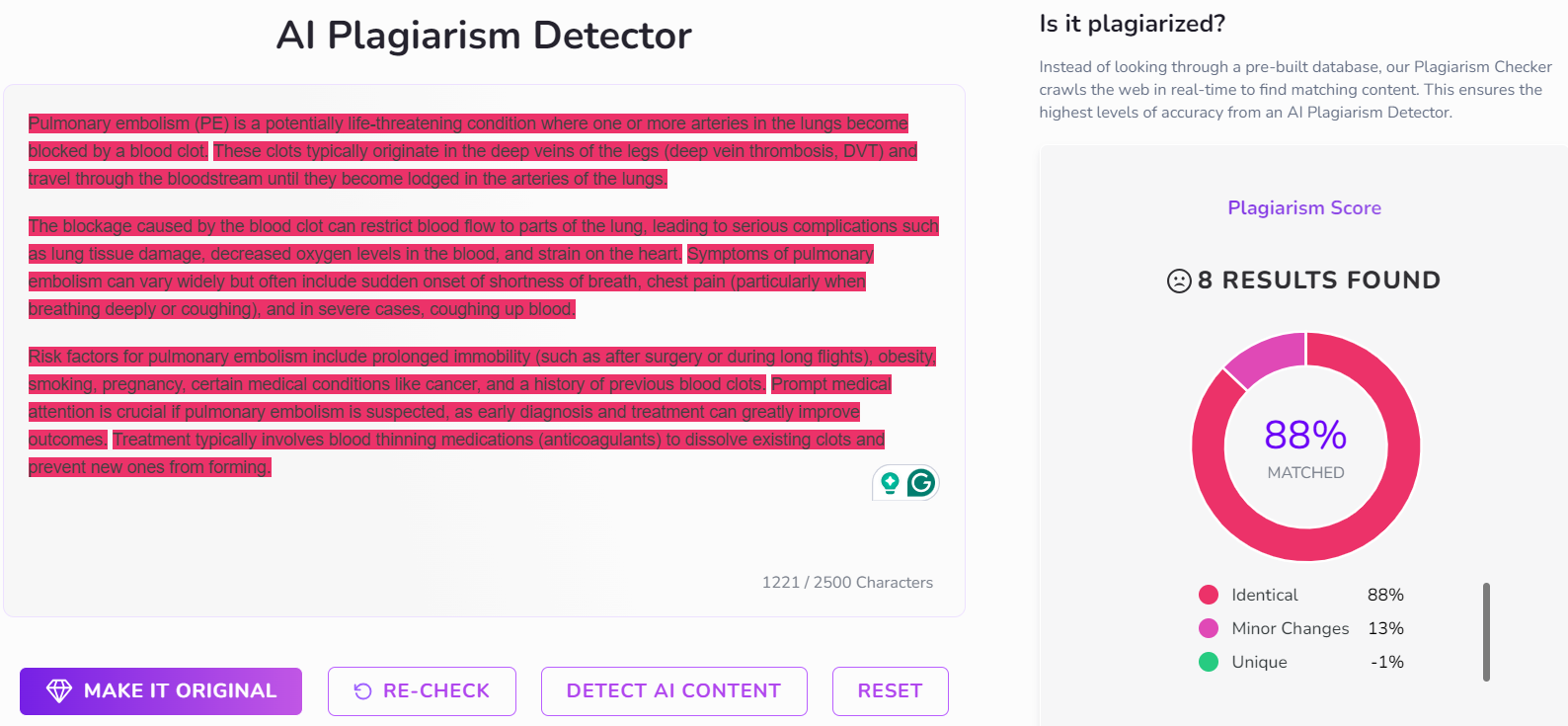
You don’t want your professor or editor catching you with copied content!
There are two ways to fix this: 1) you can rewrite the plagiarized text using a paraphrasing tool or, 2) subscribe to unlimited rewrites if you’re managing large volumes of content.
AI Detection Tools: Schools Want to Fight Back
As AI writing tools get better at creating seemingly original, human-sounding content, a corresponding technology is growing alongside it — AI detection.
This new tech analyzes written text to determine whether it was written by a person or by an AI program.
Here’s a snapshot of one of the pioneers in AI detection software, BrandWell:
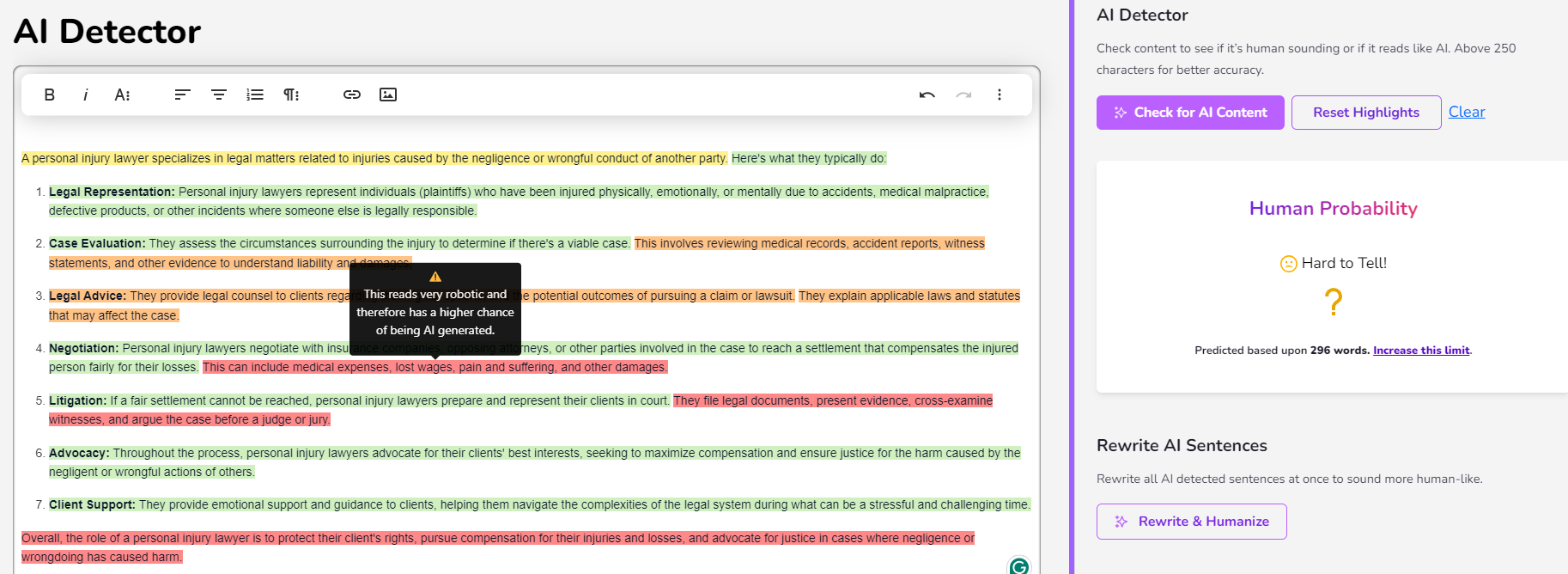
While a person might not immediately know or be able to distinguish between AI-generated text and human-authored content, these tools are designed to help highlight patterns that may suggest AI-generated content.
AI detectors analyze word choice, style, and linguistic patterns, helping shed light on the true authorship of written work and flag cases where AI actually created the content.
How Accurate Are These AI Detection Programs?
Many researchers and academics – like professors at the University of Texas at Austin, Northwestern University, and Vanderbilt University – are hesitant to rely on AI to check AI.
Some of these AI detectors have high rates of false positives, incorrectly flagging original content for plagiarism because of similarities in linguistic sequences or word choices that fit a particular AI pattern. This can create legal and financial consequences that schools and educators want to avoid at all costs.
This inaccuracy opens the door for dishonest students who might use a plagiarism checker to argue that their human-created work was written by an AI tool if it’s flagged for academic misconduct, similar to a thief arguing about false evidence.
There are other issues. The developers of AI content checkers rarely reveal their underlying methods to verify reliability, leaving both professors and accused students wondering whether or not a program’s judgment is valid or simply a misinterpretation based on the model’s limitations.
Authorship and Copyright Infringement
One of the primary concerns surrounding AI-generated content is the question of authorship.
When generative AI tools create content, who can claim ownership of the work?
Some argue that the creator of the AI tool should be credited, while others believe that the person who inputs the prompts and guides the AI’s output should be considered the author. This ambiguity can lead to issues of plagiarism and intellectual property rights.
Note: BrandWell allows users to retain rights to the content they generate on the platform. So if you’re using the app to generate blog posts, essays, newsletters, or ebooks, you own that piece of content.
Watch my video here to learn more:
To avoid plagiarism in academic writing and content creation:
- Use AI as a tool, not a content creator: AI can assist in research, data analysis, and even generating ideas, but always ensure that the final writing is your own.
- Cite sources properly: If you use AI-generated content as a basis for your writing, make sure to cite the original sources accurately. This includes both human-authored and AI-generated texts.
- Edit in your own words: When incorporating information from AI content, rephrase it in your own words and provide proper attribution. Avoid copying verbatim unless using direct quotes with appropriate citations.
- Verify and fact-check: Double-check AI-generated information against reliable sources to ensure accuracy and reliability before using it in your writing.
- Use plagiarism detection tools: Utilize plagiarism detection software to scan your work before submission. This can help identify any unintentional similarities that may need to be addressed.
For more guidelines on how to write with AI while maintaining ethical standards, read our complete guide on how to avoid plagiarism.
FAQs: Is AI Writing Plagiarism?
Is it plagiarism if AI wrote it?
No, it is not considered plagiarism if AI wrote the text, provided that certain conditions are met:
- Disclosure: Clearly indicate that the text was generated by AI. This helps distinguish between your original work and content generated by automated means.
- Acknowledge Ownership: Acknowledge the ownership of the AI-generated content. While AI can create text, the intellectual property rights typically reside with the organization or individual who developed the AI model.
- Ethical Use: Ensure that the AI-generated content is used in a manner that respects ethical guidelines and does not mislead readers about the origin or authorship of the text.
- Academic Standards: Follow the guidelines set by your academic institution or publisher regarding the use of AI-generated content. Some institutions may have specific policies on how AI-generated text should be credited or used in scholarly work.
Can Turnitin detect AI writing?
Turnitin and similar plagiarism detection tools primarily detect similarities between submitted texts and existing sources in their databases, which include previously submitted student papers, academic journals, websites, and other sources.
However, its accuracy depends on whether the specific AI-generated content has been previously uploaded and indexed.
Is it illegal to use AI to write an essay?
No, it is not illegal to use AI to write an essay. However, ethical considerations regarding attribution and academic integrity should be carefully observed to avoid plagiarism and ensure proper use of AI-generated content.
How to use AI without plagiarizing?
To use AI without plagiarizing, ensure you attribute AI-generated content properly, verify its accuracy with reliable sources, and integrate it into your writing while infusing your own interpretation, insights, and analysis.
Conclusion
The debate on whether AI writing is plagiarism is a hot topic in the academe, in journalism, and even in content marketing.
We are in entirely new territory with AI tools now coming out nearly every single week and pushing the boundary of what people believed possible just a couple of years ago.
Some educators and journalists are extremely cautious of AI writers because it threatens the validity of existing academic standards.
Others, like the Associated Press, feel that AI has the potential to free journalists from basic, data-oriented forms of journalism and instead give reporters more time for deep dives and unique storytelling that highlights a journalist’s skills, insights, and perspective which an AI program can’t replicate.
Whether or not AI writing is plagiarism will probably remain a gray area. But as AI technology continues to become a factor in both academia and the professional world, one thing is for sure: a clear discussion about the potential impact of these systems is crucial, now more than ever.

UNLOCK YOUR POTENTIAL
Long Headline that highlights Value Proposition of Lead Magnet
Grab a front row seat to our video masterclasses, interviews, case studies, tutorials, and guides.

